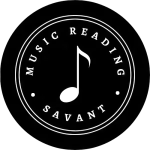The musical staff is a fundamental element of music notation that serves as a framework for musicians to read, write, and understand musical compositions. It consists of five horizontal lines and four spaces, each representing a different pitch.
Over the centuries, the staff has undergone significant evolutions to arrive at the system used in Western music today. Its origins trace back to attempts to standardize music notation, allowing for more consistent communication of musical ideas across varying regions and time periods.
Understanding the musical staff involves more than recognizing lines and spaces. Different clefs are used to change the pitch range that the staff covers, with the treble and bass clefs being the most commonly used in modern Western music.
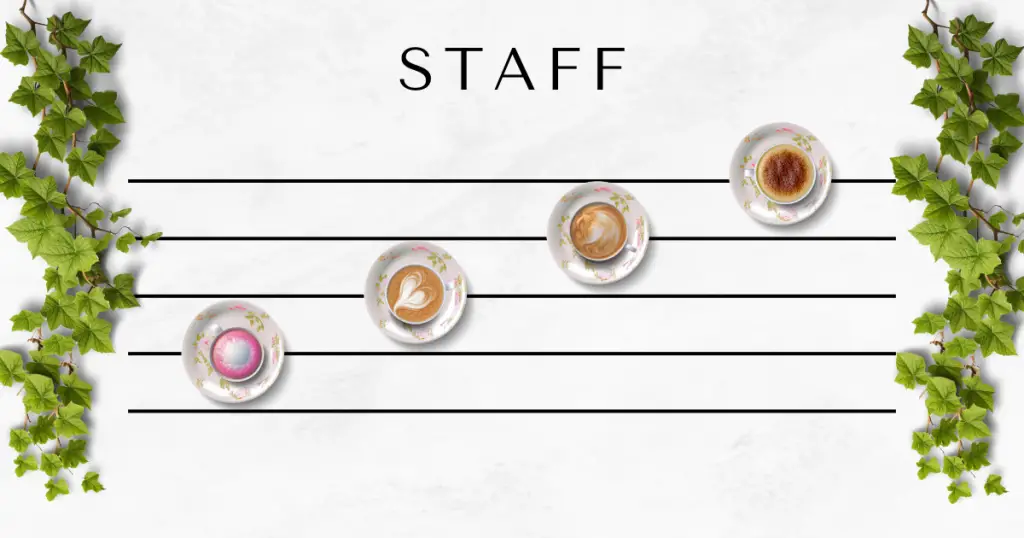
Notes placed on or between the lines represent each line and space as corresponding to a different musical pitch. Learning to read the staff is like learning a new language; it’s central to engaging with the literature of music, and it’s a fundamental skill for musicians of all levels.
Key Takeaways
- The musical staff is a core component of music notation in Western music.
- It has evolved historically to standardize the communication of music.
- Clefs, pitches, rhythms and other forms of music notation are identified on the staff, enabling musicians to read and perform music.
- Key Takeaways
- Guido d’Arezzo's Contributions
- Rise of Modern Notation System
- Definition of Staff in Music
- Musical Alphabet
- Music Notes and Rests
- Clef Signs
- The Grand Staff
- Ledger Lines
- Key Signature
- Time Signature
- Bar Lines and Measures
- Double Bar
- Connecting Staves for Instruments
- Dynamic Markings
- Tempo Marks
- Articulation
- Percussion Staff and Unpitched Notation
- Tablature Notation for Guitars
- Extended Techniques and Modern Staff Notations
- What are the components of a musical staff?
- How do you identify notes on the treble clef staff?
- What is the difference between a grand staff and a single staff?
- What is the significance of the various types of musical staves?
- How can one effectively read and interpret musical notes on the staff?
- What methods are used to teach the reading of the musical staff for piano?
History and Evolution of the Musical Staff
The musical staff is the cornerstone of written music, providing a structure for note placement. It has evolved from the rudimentary neumes of Gregorian chant to the sophisticated system used today for monophonic, polyphonic, and harmonic music.
Guido d’Arezzo’s Contributions
Among the key figures in the history of notated music, Guido d’Arezzo stands out for his monumental improvements to the medieval music notation system. We owe the modern concept of the staff largely to Guido’s innovative methods, which emerged around the 11th century.
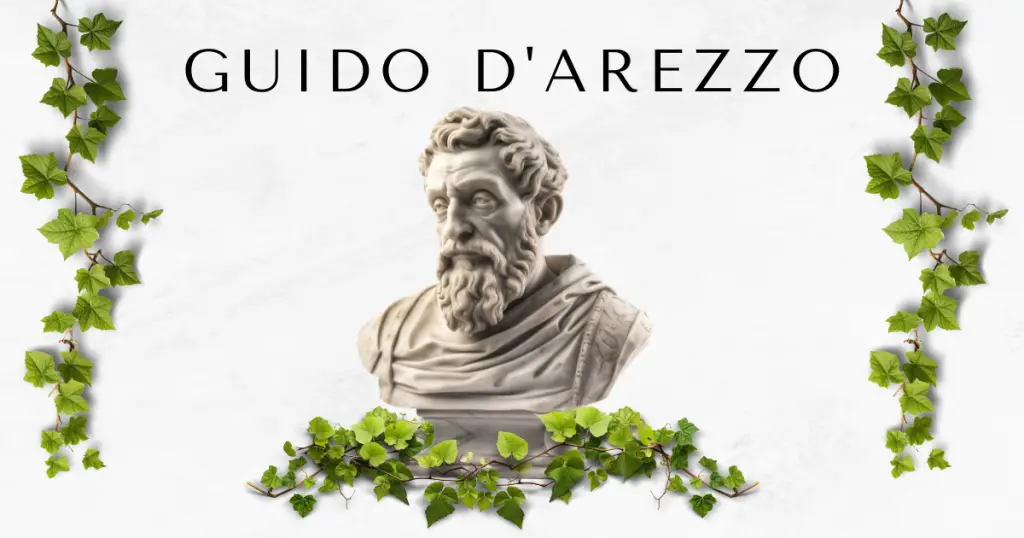
He introduced a system of lines and spaces representing different pitches, moving away from the ambiguity of neumes. His approaches improved our notation for Gregorian chant, allowing for a more accurate identification of pitch and, as a result, advancing in the teaching and diffusion of church music. This framework established a standardized method for documenting melodies, which was crucial in the shift to increasingly sophisticated polyphonic composition.
Rise of Modern Notation System
The initial changes made by Guido d’Arezzo laid the groundwork for the intricate musical notation that would develop. The music staff gradually grew to five lines, allowing polyphonic music to flourish.
From simple horizontal lines denoting relative pitch, the system evolved into one that could capture precise rhythmic values and pitch, influencing the evolution of music notation. This breakthrough was critical as music progressed from oral traditions to a form that could be precisely copied over time and space, resulting in a wealth of musical expression and complexity.
Parts of the Musical Staff
The musical staff forms the foundation of written music; it’s where we place notes and symbols that represent sounds and rests in music. Let’s look at the key components that enable us to read and write music successfully.
Definition of Staff in Music
The staff, also known as the stave, consists of five horizontal lines and four spaces, each representing a different musical pitch.

On this framework, we place music notes and other symbols to visually represent music.
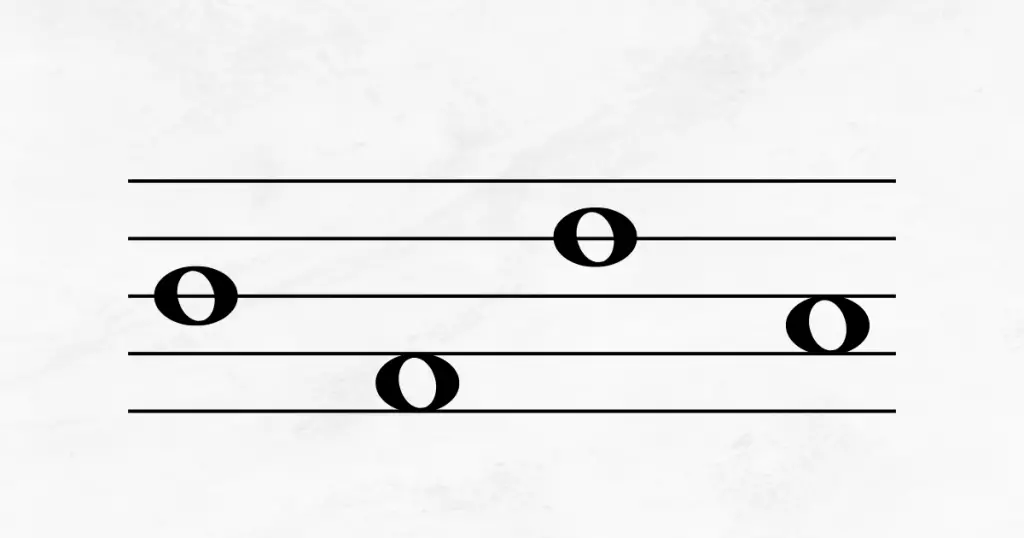
Music notes are written on the five lines and in the four spaces. Each line and space holds a note that identifies a specific pitch.
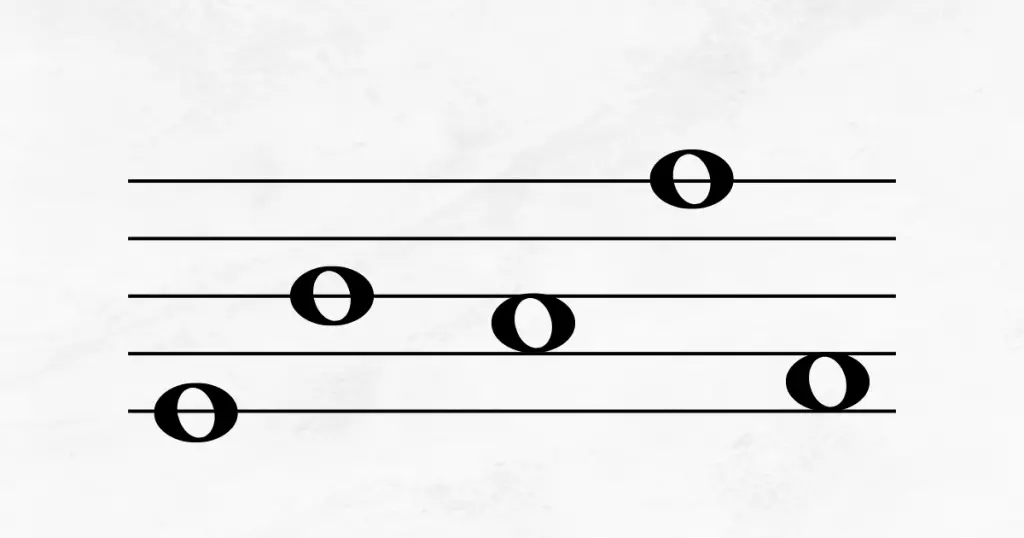
The staff’s lines are numbered from bottom to top using digits 1–5.

Similarly, the spaces between the lines are numbered from the bottom up using numbers 1-4.
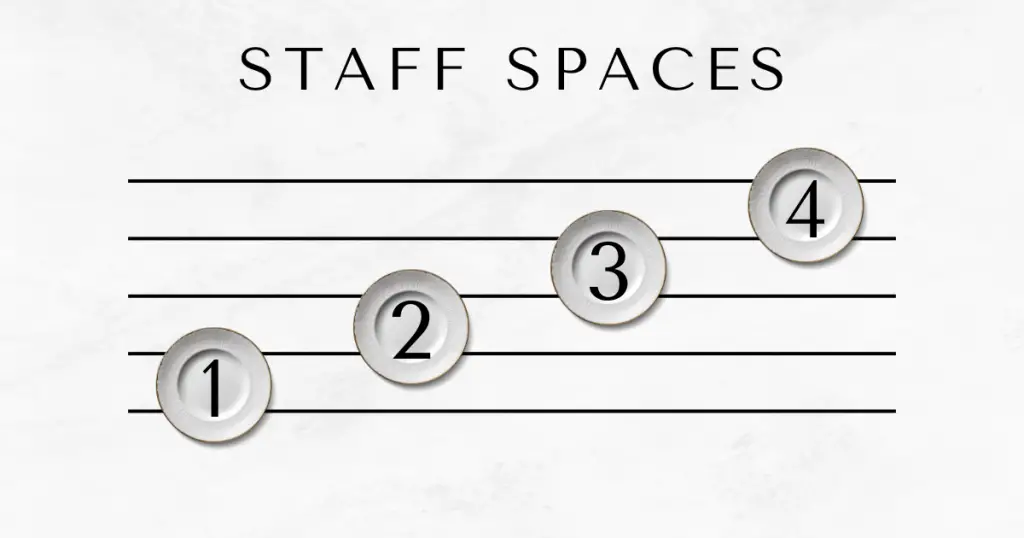
Higher notes on the staff correlate to higher pitches.
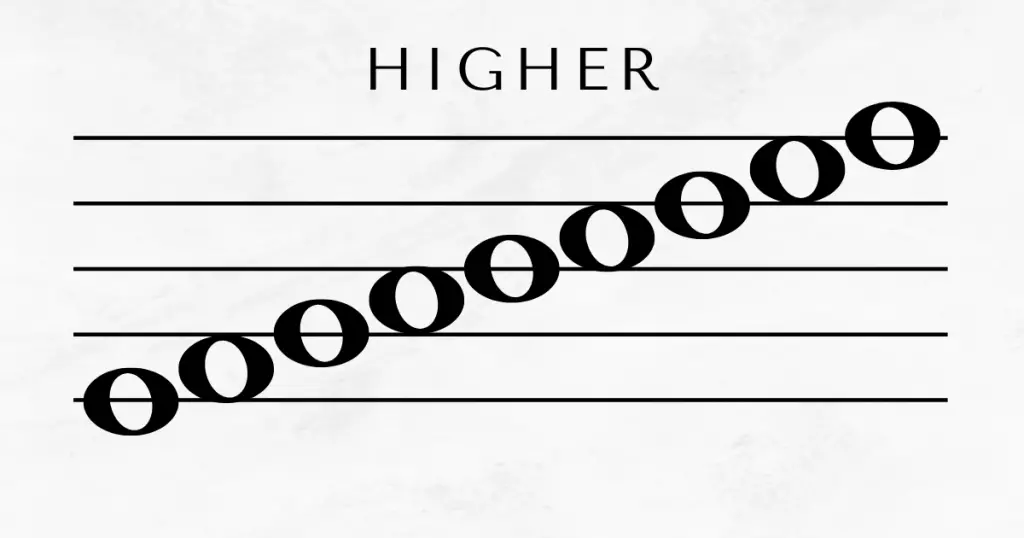
The lower notes represent lower pitches.
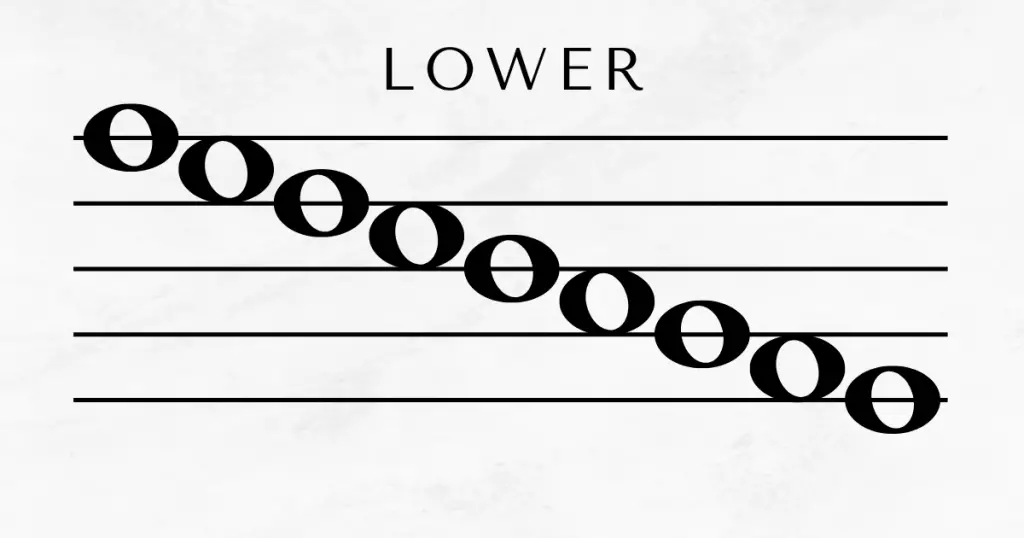
Musical Alphabet
Each line and space on the staff represents a specific pitch or sound, which is named after the first seven letters of the alphabet: A, B, C, D, E, F, and G. In music theory, this is known as the musical alphabet.
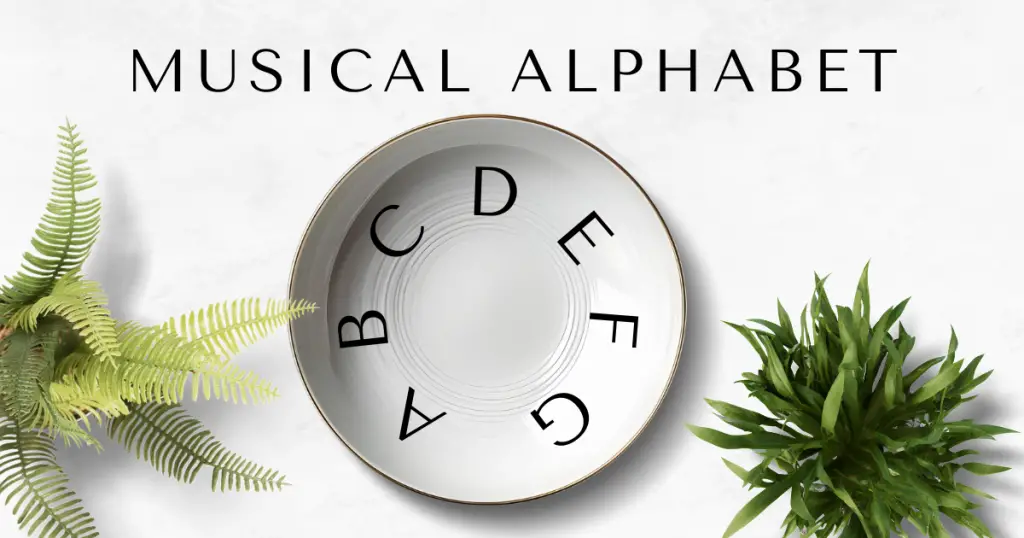
Depending on how the music notes are arranged on the staff, these seven letters have the ability to convey an extensive variety of musical sounds.
Music Notes and Rests
Music notes are oval-shaped symbols that show both the pitch and duration of a sound. For example, a quarter note tells us to play a tone for one beat, while a half note lasts for two beats. A whole note equals four beats, while a pair of eighth notes beamed together is a total of one beat.
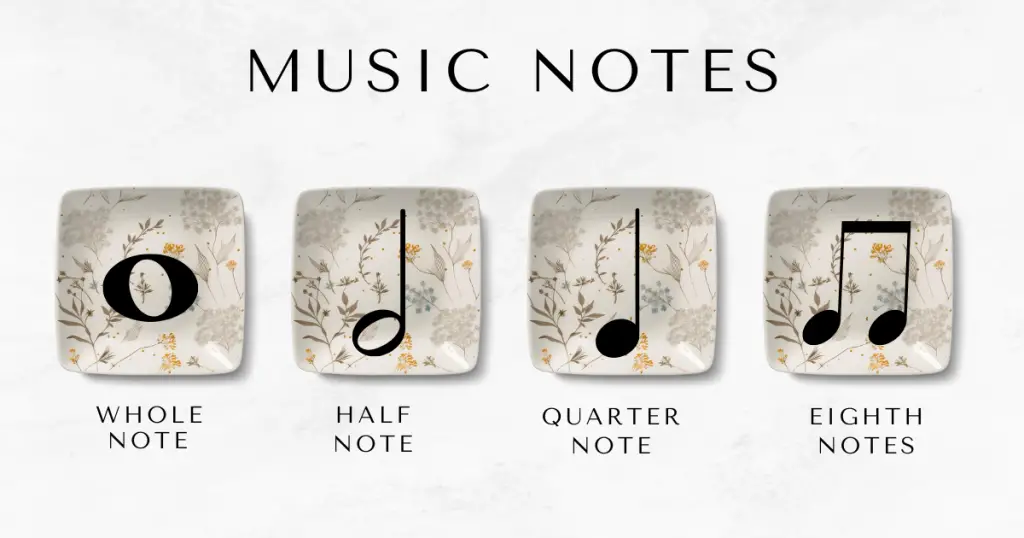
Rests, on the other hand, provide periodic silence in music. For example, a quarter rest denotes silence for the same duration as a quarter note. Similarly, a half rest is two beats, a whole rest is four beats, and a single eighth rest equals a half beat of silence.
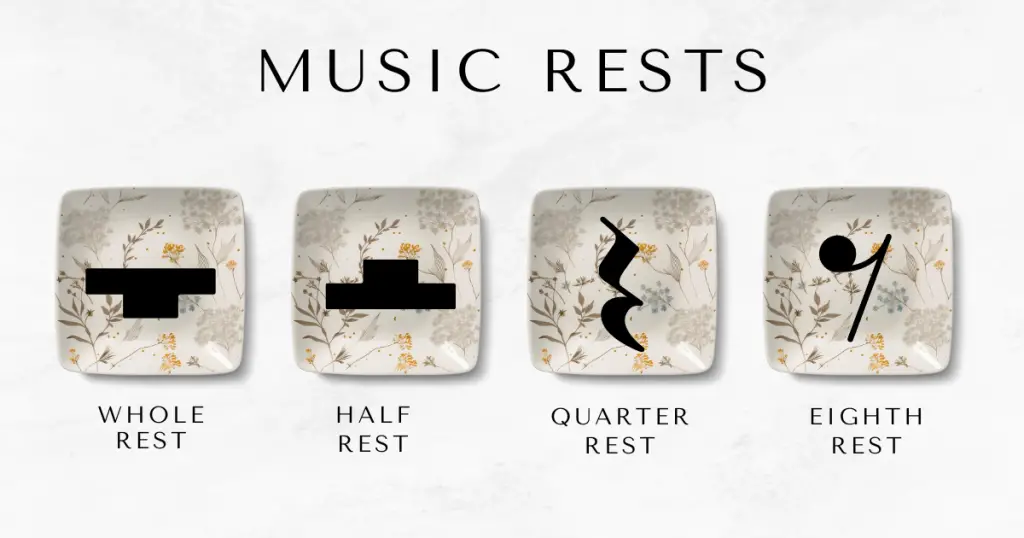
Both music notes and rests are used on the staff to convey the essential balance of sound and silence in music. Both rhythm and pitch are important in music cognition. The clef determines note names and their associated pitches.
Clef Signs
In written music, clef signs are the fundamental elements of music notation that govern pitch and harmony. These symbols anchor the musical staff by appearing at the beginning. The purpose is to guide performers through the complex landscape of musical notation.
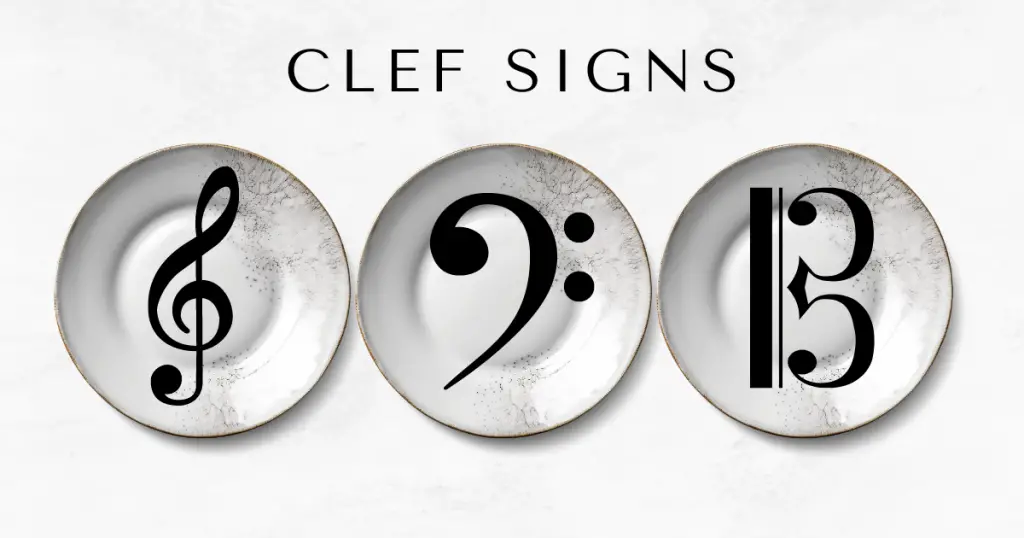
A clef is a symbol at the beginning of a staff that assigns a particular note to one of the lines or spaces. The most common clefs are the treble clef and bass clef. They both serve different musical ranges of sound.
The treble clef, also known as the G clef, spirals around the second line of the staff, indicating this line represents the note G. The treble clef staff is used for higher-pitched instruments and voices.
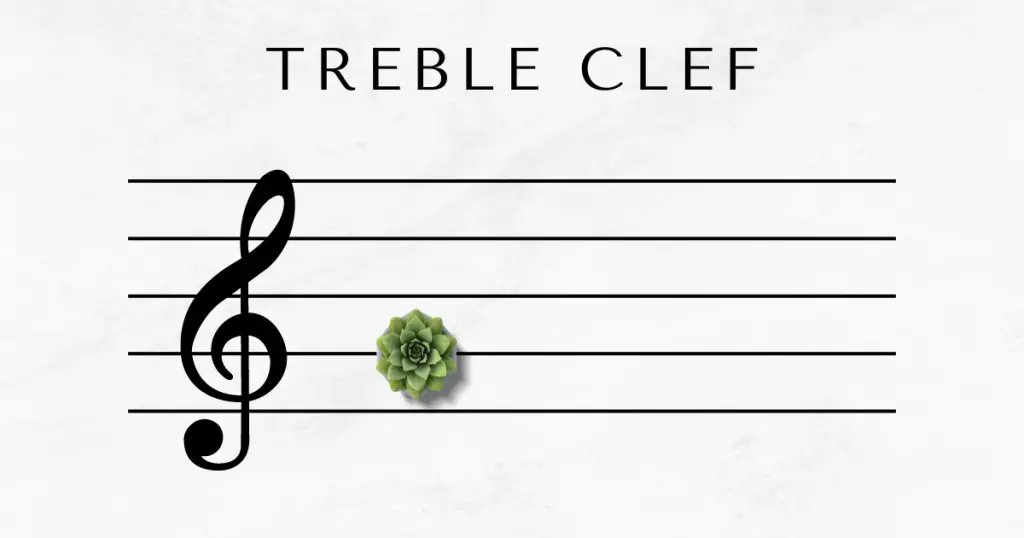
The bass clef, often known as the F clef, establishes the fourth line as the note F. Lower-pitched instruments and voices use the bass clef staff.
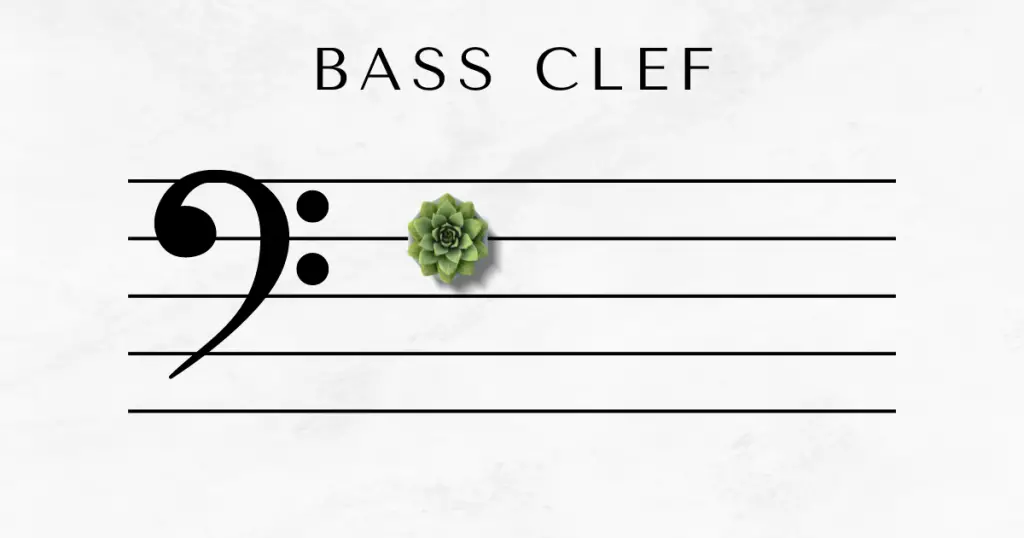
The C clef indicates the position of middle C on the staff. Middle C is denoted on the line or space in between the two C’s of the C Clef symbol. The two most commonly used types of C clef’s are the alto clef and tenor clef.
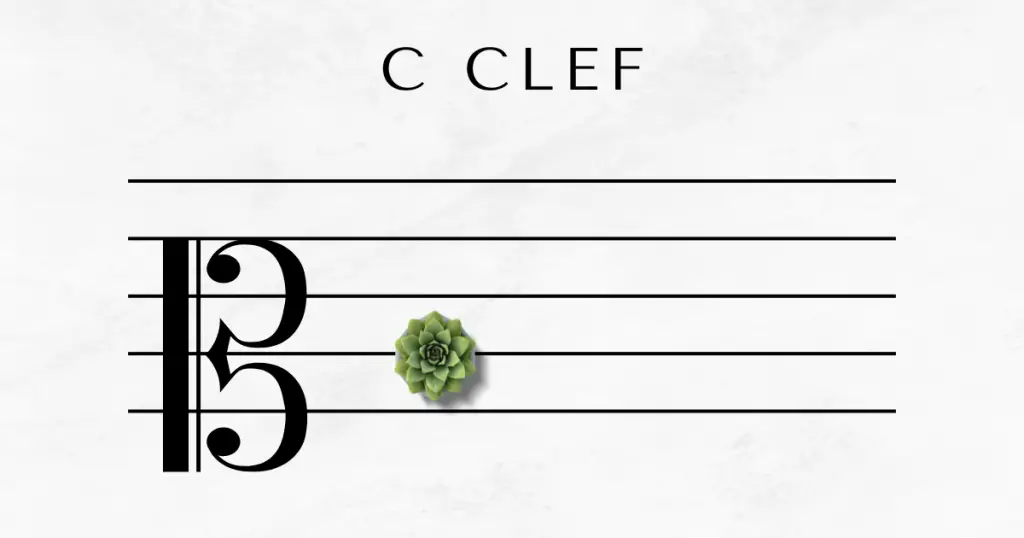
The alto clef locates middle C on the third line of the staff. Viola players mostly use the alto clef staff.

Middle C is placed on the fourth line by the tenor clef. The tenor clef staff is ideally suited for the upper registers of the cello, bassoon, and trombone.
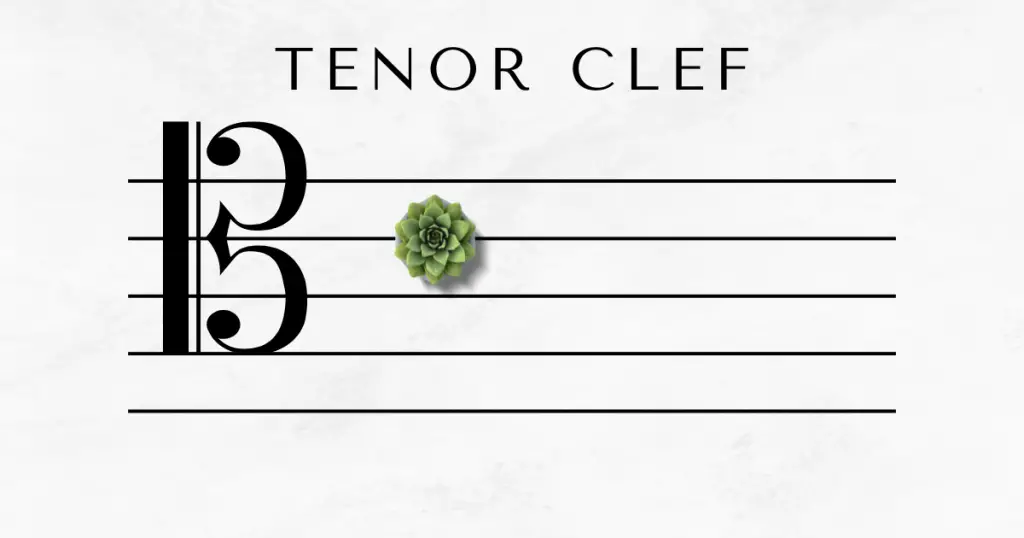
Understanding these clef symbols and their functions on the staff allows us to appropriately read and interpret a wide range of musical literature.
The Grand Staff
The grand staff is comprised of a treble clef staff and a bass clef staff joined by a brace and a vertical line. This more complex staff is commonly used in piano music. It allows for the simultaneous notation and reading of a wide variety of notes. The grand staff represents a continuous range of pitches from low to high and is an essential tool for pianists and other keyboard instrumentalists.
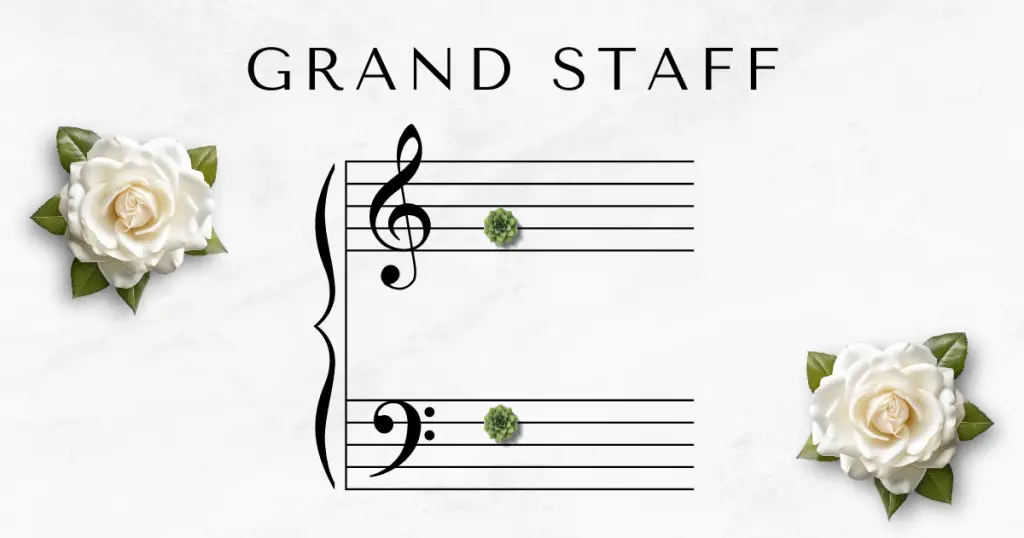
Ledger Lines
When musical pitches extend beyond the five lines of the staff, we use additional short lines called ledger lines. These lines are added immediately above or below the staff to extend the pitch range. This allows more notes to be written higher or lower than the normal range of the conventional staff. When notes are too low or too high to be written on the staff, ledger lines are used. Ledger lines use the same spacing and note sequence as the staff.

Key Signature
The key signature, which appears directly after the clef, informs us about the music’s scale by showing which notes are sharp or flat throughout the composition. It also influences the pitch of the notes and establishes the tonal foundation. Instead of writing a sharp or flat next to all the notes in a song, it’s much easier to place them all at the very beginning.
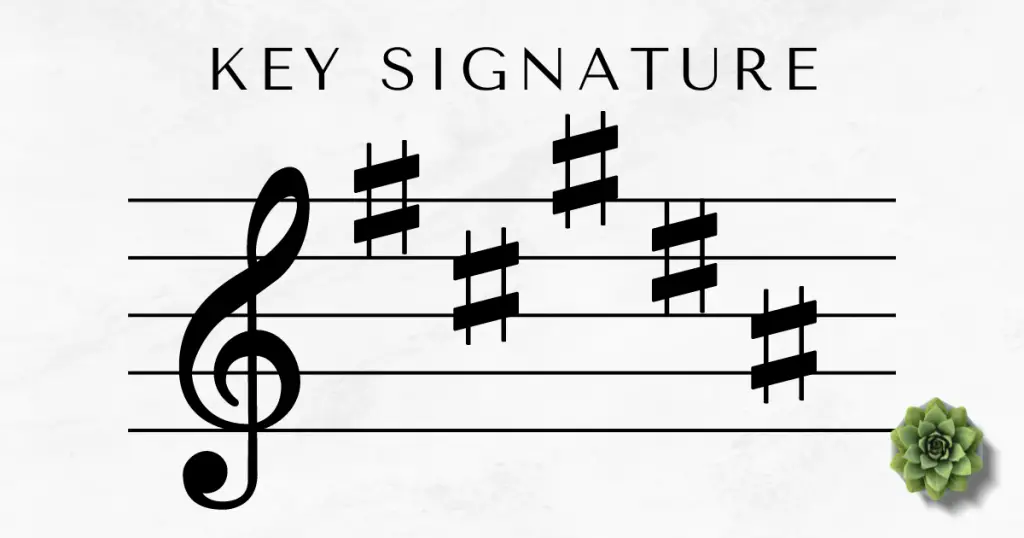
Time Signature
The time signature is specified at the beginning of a piece, right after the key signature. It directs the rhythmic structure by determining the number of beats in each measure (top number) and which note value (such as a quarter note or eighth note) receives the beat (bottom number).
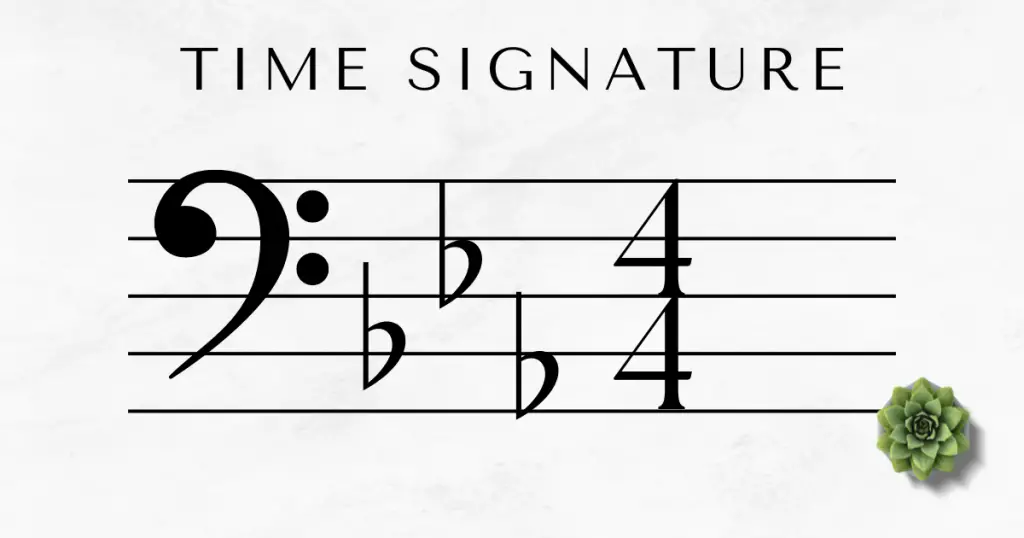
By mastering these aspects of music notation, we lay a foundation for interpreting and performing music accurately. Let’s now explore more about how we use the staff.
The Musical Staff in Use
In this section, we will look at how we use the music staff as a basic tool for writing and reading music. We will concentrate on its arrangement into bar lines and measures, how we connect staves for different instruments, and the intricacies of annotating instrumental parts.
Bar Lines and Measures
The music staff is divided into equal parts using bar lines. The aim of bar lines is to separate notes and rests into equal groupings for easier reading. A measure is the space between the bar lines, commonly known as bars. In this space, we’re measuring the total number of beats represented by notes and rests.
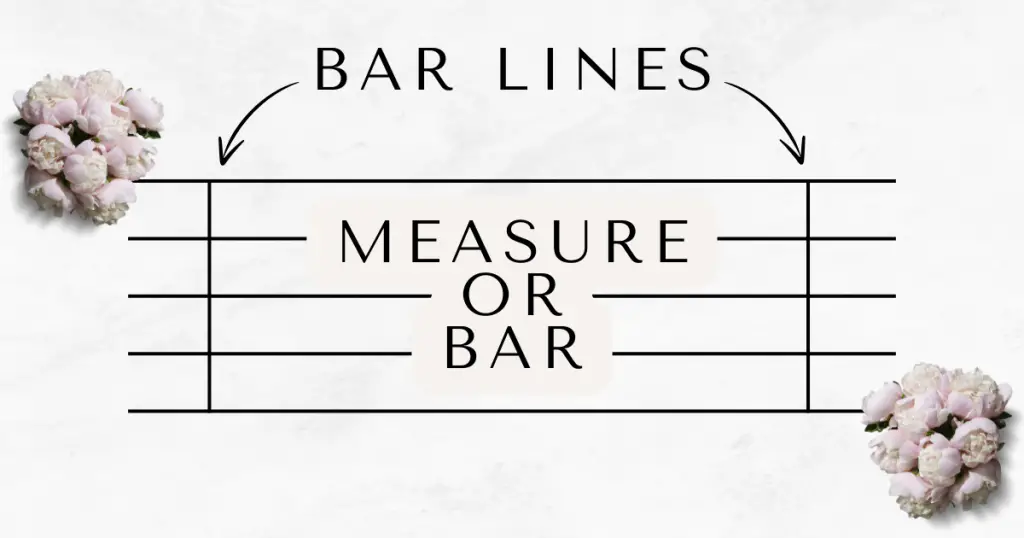
Bar lines help musicians explore a piece, maintaining exact timing and rhythm. For example, a conventional 4/4 time signature has four beats per measure, with each quarter note indicating one beat.
Double Bar
A double bar is written at the conclusion of a piece of music to indicate the end. It consists of a single thin line and a thicker line on its right side. The thicker line must always be on the outside, where it is most visible to musicians.
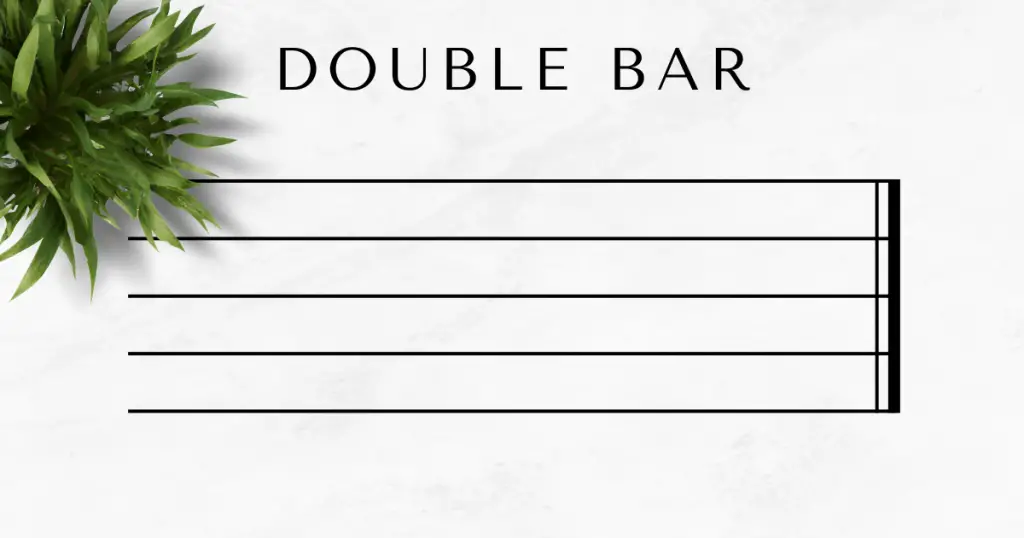
The bar lines and double bar go through the entire staff on a grand staff. This is true for all music with multiple staves.
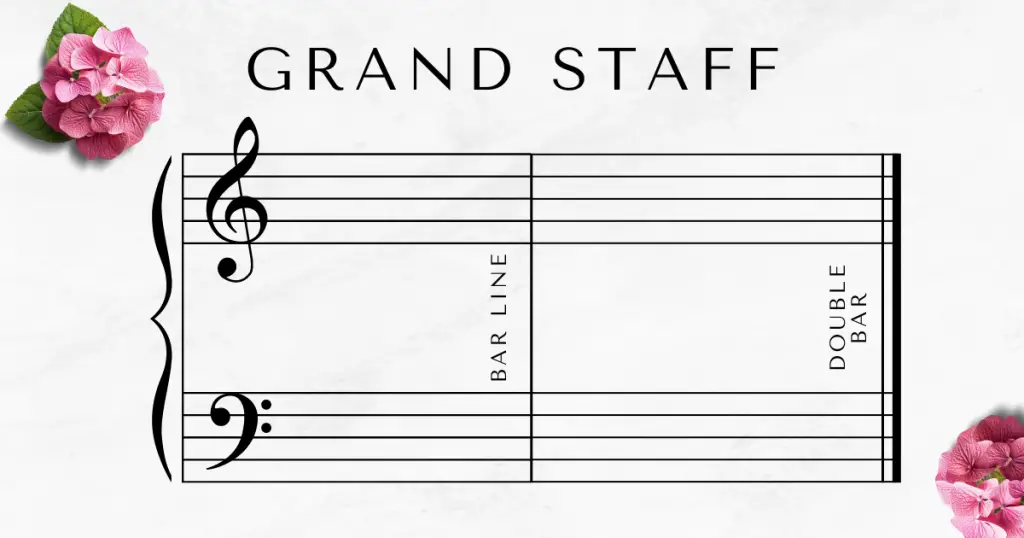
Connecting Staves for Instruments
When writing music for instruments like the piano or for an orchestral score, we often connect multiple staves to create a staff system. In piano music, the grand staff is one system. For orchestral scores, we extend this technique to include several instruments, such as a violin section, and use similar connecting mechanisms to signal that all of these sections are performed at the same time.
Annotating Instrumental Parts
Extra symbols are added to the staves of instrumental parts to clarify the composer’s intentions. These annotations may include dynamic markings, tempo marks, articulations, and expressive cues, giving musicians explicit instructions on how to play the piece. This attention to detail is required to portray the exact emotion or intensity sought in a composition.
Dynamic Markings
Volume is indicated in written music by use of dynamic markings. These symbols or dynamic signs tell the musician how soft or loud to play the music. The most commonly used dynamics are piano (soft), mezzo forte (medium loud, and forte (loud). These symbols are used mostly below the staff to indicate a sudden change.

However, gradual increases and decreases in volume are also necessary. This is demonstrated through using crescendo (gradually louder) and diminuendo (gradually softer) markings. The diminuendo is also known as a decrescendo.
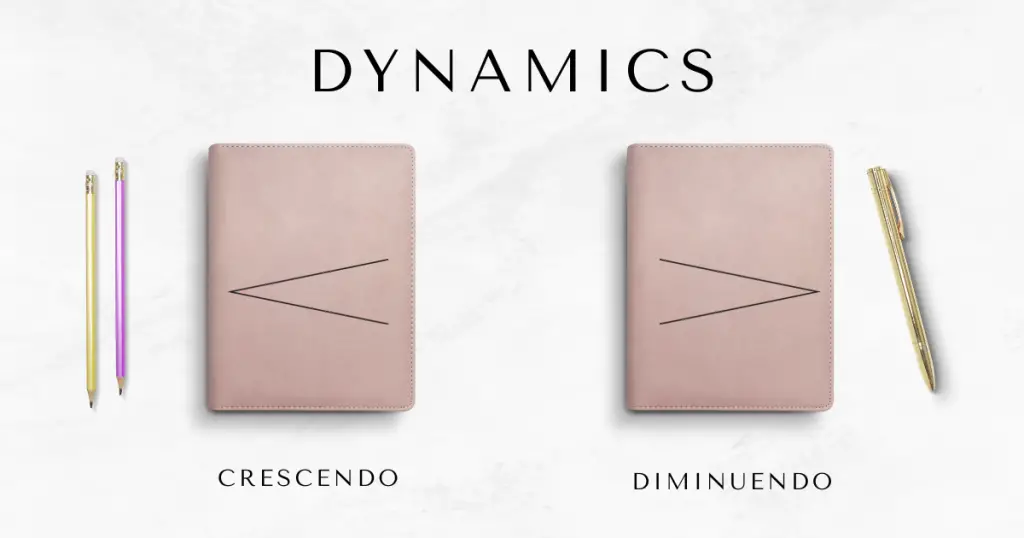
Tempo Marks
Tempo marks usually appear above the staff and indicate how fast or slow the music should be played. The most common tempo markings include Largo (very slow), Adagio (slow), Andante or Moderato (walking speed), Allegro (fast), and Vivace (very fast).
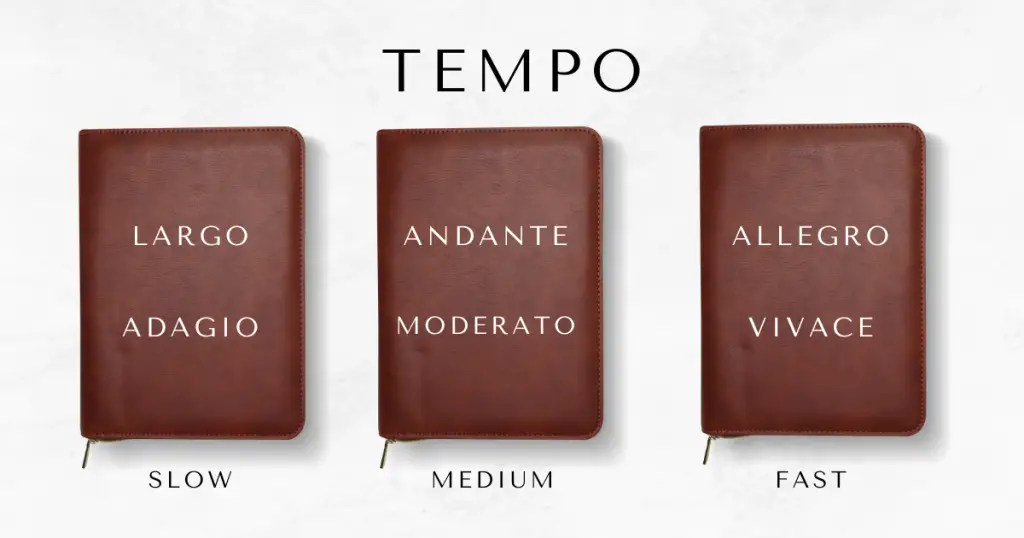
For more musical interest, a gradual change of tempo is employed. Ritardando (abbreviated rit.) means gradually slower and accelerando (accel.) means gradually faster.

Articulation
Articulation markings are applied to notes to indicate how it should be performed. This can signify playing the note short and disconnected (as in staccato) or smooth and connected (legato). An accent emphasizes notes by making them louder, whereas a sforzando implies that a note should be performed with a sudden loud force. A tenuto is to play a note full value, but a fermata implies holding a note longer than its regular duration.
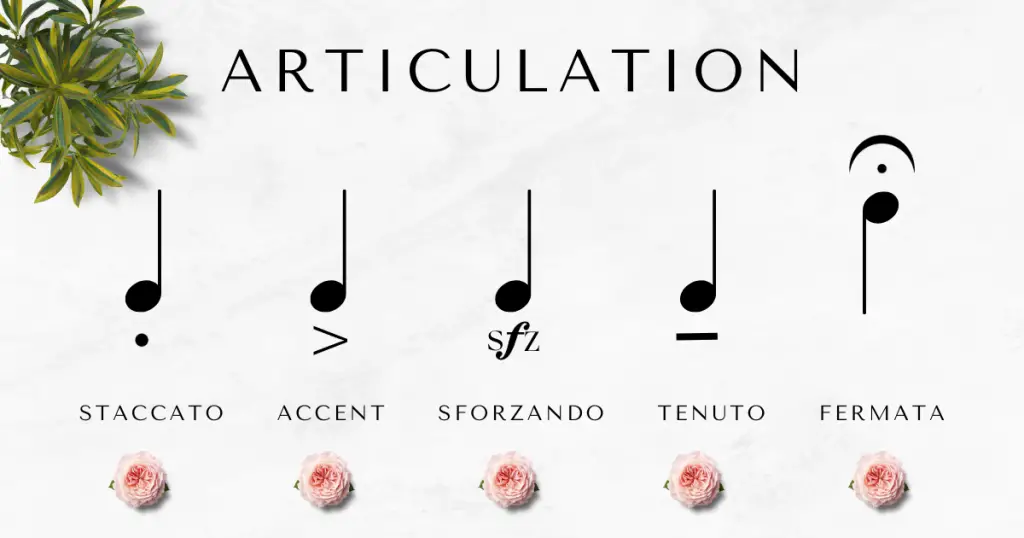
As music writers and composers, our comprehension and use of the staff, with its bar lines, measures, and annotations, is critical in the production and performance of music. It underpins our ability to accurately and efficiently communicate musical ideas.
Specialized Forms of Staff Notation
In the world of music notation, the standard five-line staff is only the beginning. We look at numerous specialized forms of staff notation designed for certain instruments and musical processes, each with its own distinct system for capturing the full range of an artist’s intention.
Percussion Staff and Unpitched Notation
Percussion notation frequently uses a percussion staff, which caters to unpitched percussion instruments. These instruments, such as drums and cymbals, do not produce specific pitches like a piano or violin. As a result, staff lines and spaces indicate distinct percussion sounds rather than pitches.
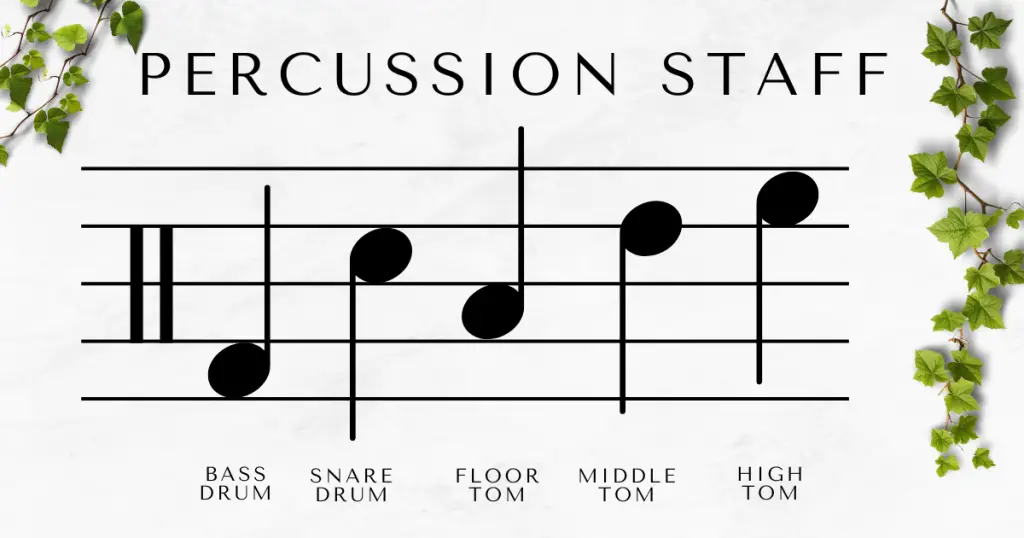
How we decide which line or space of the staff belongs to which instrument is often depicted in a composition. In general, lower sounds are located at the bottom of the staff, while higher sounds are represented at the top.
Tablature Notation for Guitars
Tablature notation is a type of music notation designed primarily for fretted stringed instruments such as guitars. It differs from a typical music staff in that it employs six lines to symbolize the guitar’s six strings. The numerals represent frets rather than standard notes.
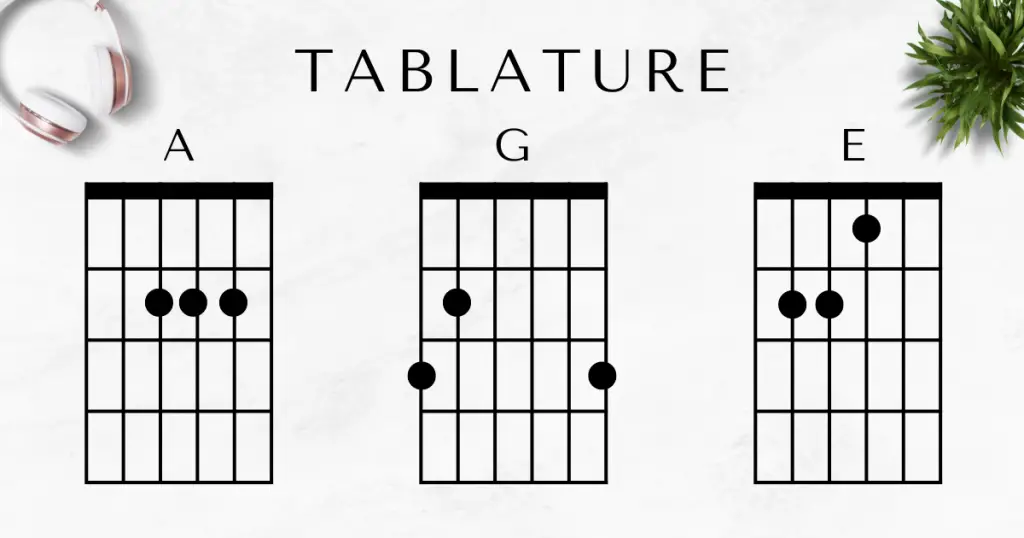
This straightforward representation of instrumental playing technique makes it extremely accessible to both beginners and experienced performers. It provides a visually uncomplicated guide for finger placement that does not require knowledge of traditional staff notation.
Extended Techniques and Modern Staff Notations
The twentieth and twenty-first centuries witnessed an explosion of new musical sounds and methods, ranging from flutter-tonguing on woodwinds to string harmonics on the violin. Modern extended techniques necessitate new symbols and notational systems that go beyond the traditional bass and treble staves.
Composers frequently create unique notations and symbols to accurately communicate these methods. While there isn’t always a consistent approach, such markings are essential for describing the precise artistic impact needed. These symbols are used in conjunction with a traditional staff to instruct performers on how to create these new sounds.
Musical Staff Summary
The musical staff is an essential part of Western music notation. It is required for reading, writing, and playing music. It has developed over a period of years to standardize written musical concepts. The staff has clefs, pitches, rhythms, and numerous markings, allowing musicians to accurately interpret and execute music.
Understanding the music staff is critical to maximizing your musical ability. Keep practicing, and you’ll become more confident and adept at reading, interpreting, writing music, and expressively performing music.
Additional Music Theory Resources
Check out some of the recommended books and online resources for additional information. The more you study, the more you will learn how to read and write music.
- Alfred’s Essentials of Music Theory: A Complete Self-Study Course for all Musicians by Andrew Surmani, Karen Farnum, and Morty Manus
- Three Minute Music Theory Lessons and Games
- Online YouTube tutorials by Music Reading Savant
- Short videos on TikTok by Music Reading Savant
Frequently Asked Questions
The section provides straightforward and useful answers to frequently asked questions concerning the musical staff. Please feel free to ask more questions in the comments.
What are the components of a musical staff?
A musical staff consists of five horizontal lines with four spaces between the lines. The lines and spaces of a staff represent various pitches.
How do you identify notes on the treble clef staff?
Notes on the treble clef staff are identifiable by their position on the lines and spaces. The note E is the bottom line while F is at the top. The phrase “Every Good Boy Does Fine” might help you recall the line notes. The word “FACE” spells the space notes on the staff.
What is the difference between a grand staff and a single staff?
A grand staff is a treble and bass clef staff joined by a line and a brace. It is mostly used in piano music. A single staff, on the other hand, has only one clef and is used for instruments that play just one line of music.
What is the significance of the various types of musical staves?
Various staves, such as the treble, bass, alto, and tenor clefs, cater to different pitch ranges. This optimizes the notation for instruments or voices with varying ranges.
How can one effectively read and interpret musical notes on the staff?
Understanding the clef symbols, key signatures, and note placements on the staff is essential for effective note reading. Regular sight-reading practice improves this skill set.
What methods are used to teach the reading of the musical staff for piano?
Reading the musical staff for piano is frequently taught by identifying notes with keyboard hand placements, using mnemonic devices, and integrating exercises that include both clefs of the grand staff.
Related Articles and Tutorials
Check out our other music theory articles and tutorials for more detailed lessons and activities.
